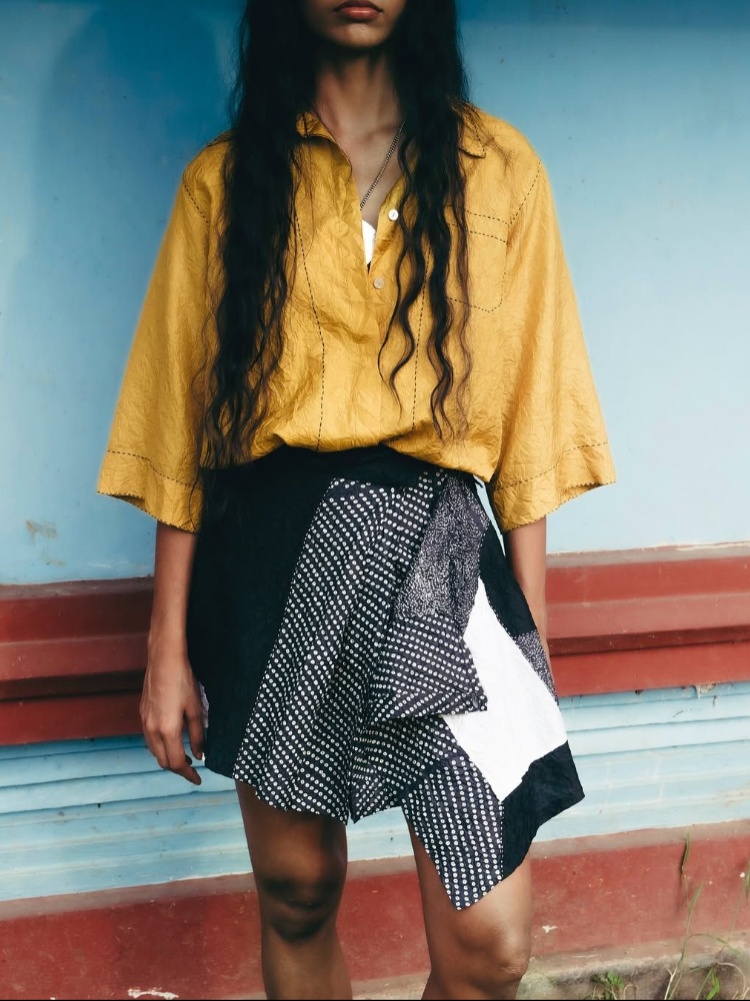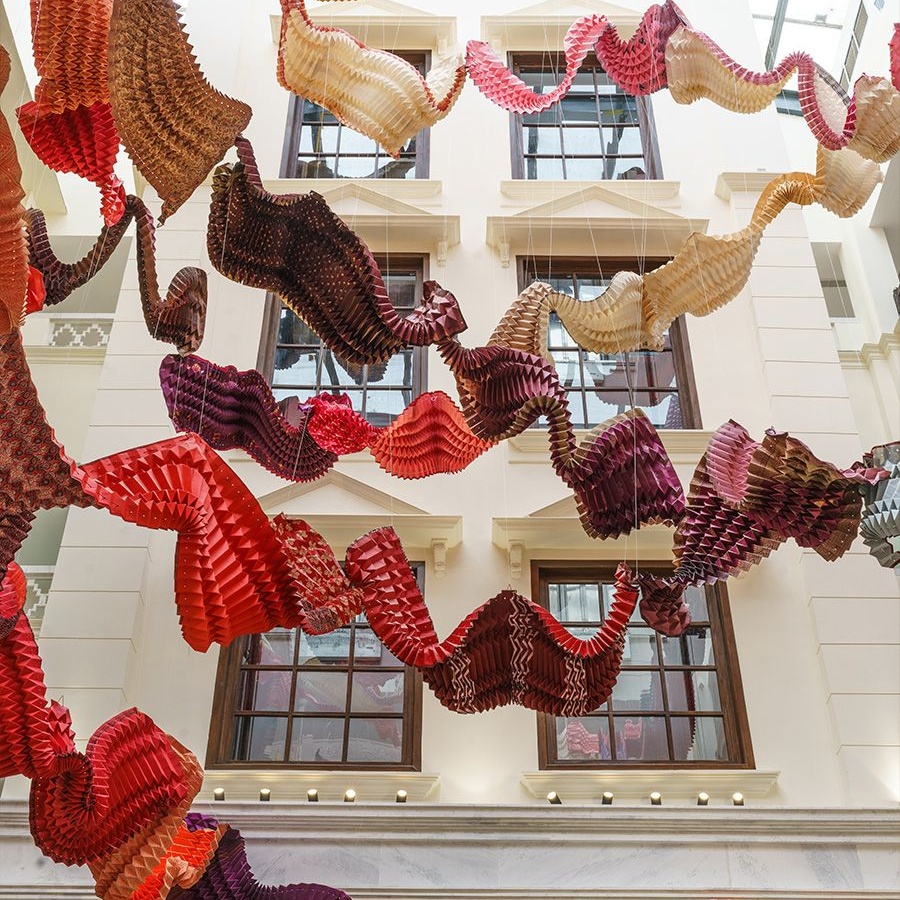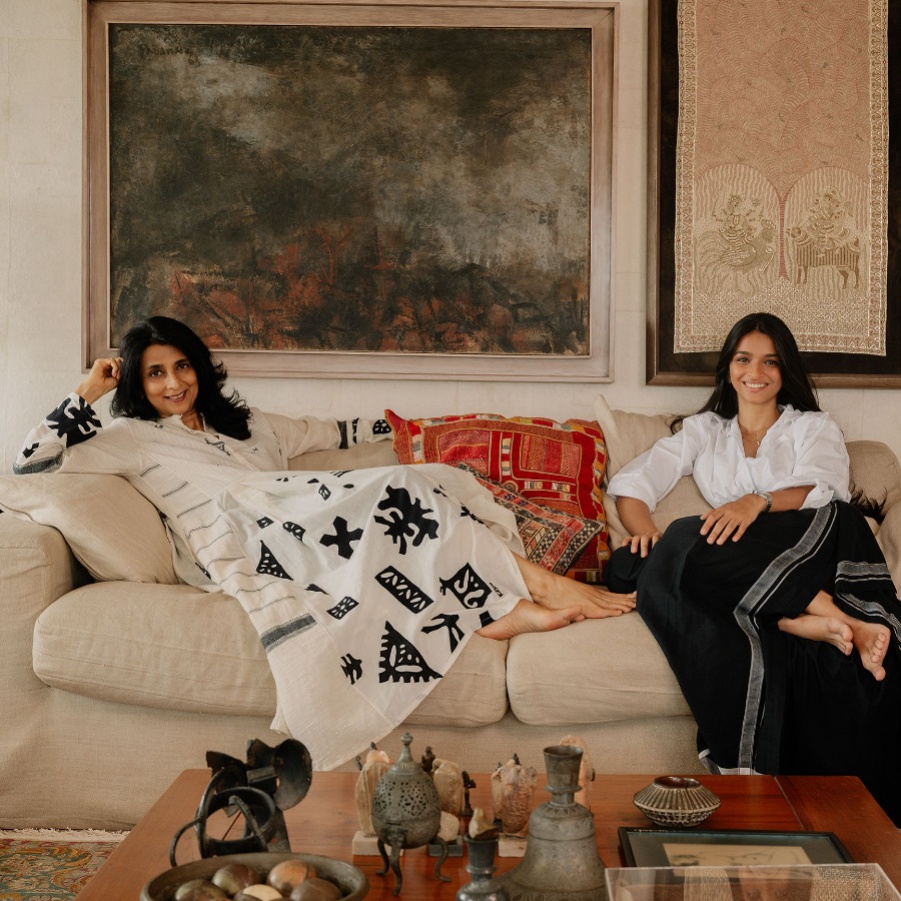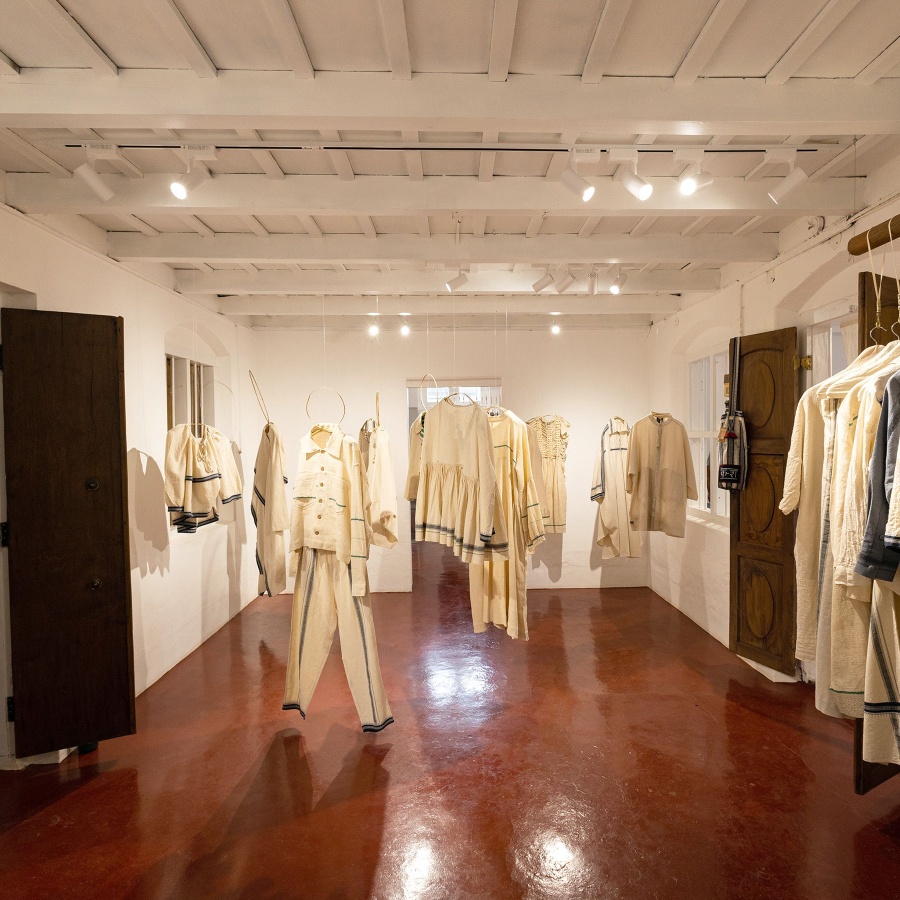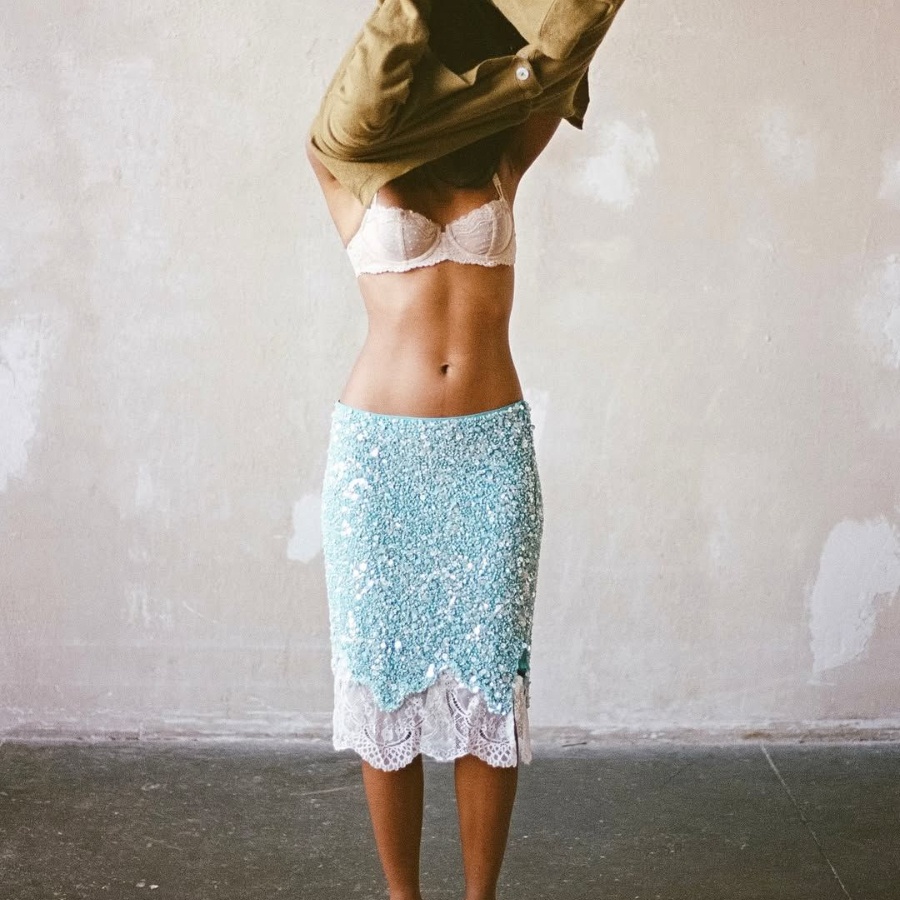“The way a man hikes up the mundu, there’s no sense of propriety. And I think for us to also navigate those spaces, it is an intentional choice of reclamation,” remarked artist Devi Seetharam when I spoke to her over a phone call one morning.
The revelation comes, as most revelations do, through repetition. Devi Seetharam has been rendering the same image for months: men in white mundus, standing in clusters, occupying space with casual authority. It’s become a series of paintings, titled Brothers, Fathers and Uncles, that’s travelled across the world, including the Kochi Biennale. Now, finally, what she documented as an artist, women are beginning to claim as wearers. The mundu, along with its casual cousin, the lungi, is crossing gender lines not through fashion week declarations but through everyday adoption. “Women don’t loiter, men seem to,” she reminded me. “Women travel from point A to B, B to C; they never occupy space for the sake of it.”
The practical poet
Here is what fashion schools don’t teach: the simplest garments are often the most sophisticated. The lungi, whether Kerala’s ceremonial mundu, Tamil Nadu’s silk veshti, or the everyday cotton wrap worn by men around the country, represents centuries of design refinement. Each version solves problems of humidity, mobility, social signalling, or affordability. Cotton manages heat without synthetics. Silk provides formality without discomfort. Universal sizing is folded into the cloth itself. Infinite styling emerges from a single form.
The lungi succeeds because it refuses the false choice between beauty and utility. Watch someone adjust one—hiking the hem for mobility, folding the waistband for proportion, retying for activity—and you see clothing as responsive technology. No sizing charts. No alterations. No special undergarments. No dry cleaning. The garment adapts to bodies, not the other way around. In an industry obsessed with innovation, the lungi’s brilliance lies in its clarity: protect, enhance, and be versatile.
For Bengaluru-based designer Aiswarya Kutty, who often experiments with the humble lungi both as a maker and a wearer, its structural simplicity was the entry point. “It’s much less fabric, and you can wear it as a whole piece or as separates,” she said. The ease of drape made it less intimidating than a sari, and for her it became the starting point to play with traditional cloth.
Pranav Misra, co-founder and creative director of Huemn, carried the same instinct and curiosity into the lungi. The brand created a pre-draped version with pockets, designed especially with women in mind, to make the garment easier to wear without the fear of it falling. “The drape still stays playful—you can knot it, pleat it, or tuck it as you like—but the fear of managing it goes away. It becomes democratic; people can wear it however they want,” he said.
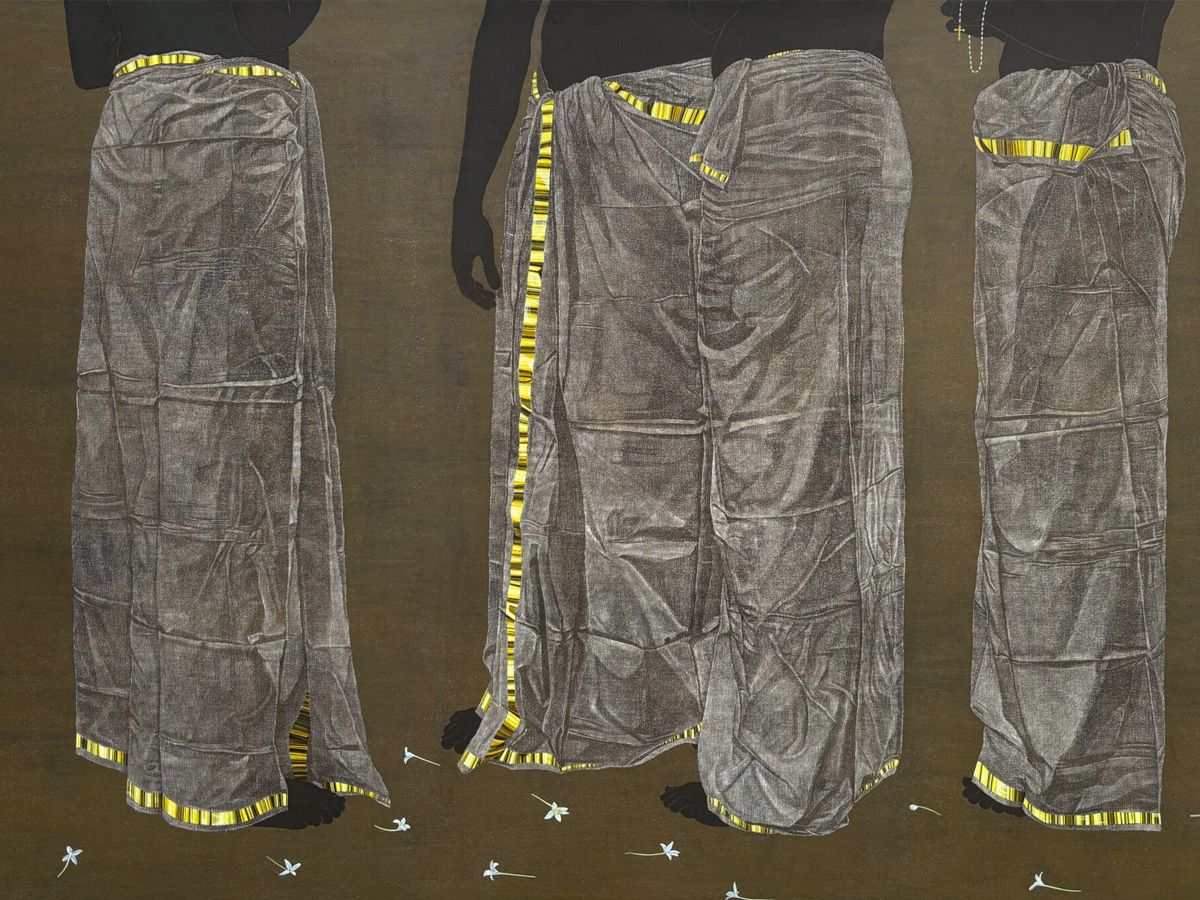
Devi Seetharam, 'Akasha Malli' (Cork Flower)
Designed for many meanings
Like Misra and Kutty, other designers too are rewriting the rectangular cloth’s script. Amit Malhotra and Saurabh Kumar of the label Gul Sohrab frequently pair checked lungis with cropped jackets (Kareena Kapoor Khan is also a fan of their reversible skirt made of a checked, mundu-esque ikat fabric). The label No Grey Area added buttons and stitched elements that modernised the wrap for different social contexts. Iro Iro, led by Bhaavya Goenka, explores the lungi through kala cotton and adds a belt while adhering to a zero-waste design philosophy. And at Huemn, Misra and his co-founder, Shyma Shetty, experiment with the drape in multiple forms, from pre-draped versions with pockets to their hybrid sari pants.
Designer Divyam Mehta treats the lungi as a translation project. His black, minimalist pre-draped lungi-skirt hybrid kept the functionality while expanding its context. “The lungi is layered with associations of class, labour, and region, and those meanings cannot be erased,” he said. “But design intervention allows us to expand its story. By placing it in new contexts, like on a runway, in an editorial, or styled with unexpected elements, we are not denying its roots but amplifying its range. It becomes a conversation starter: from village courtyards to global fashion weeks, the lungi proves it can travel.”
For Misra, the lungi is also a way to share his own cultural inheritance. “Growing up in Lucknow, the lungi was everywhere—my father and uncles wore it after work, it was part of daily life…For me, the lungi came from curiosity and memory. It is part of my world, and I wanted to share it without turning it into a transaction,” he said.
This idea of personal memory flowing into shared cultural identity is something Goenka also points to. “What makes the lungi visible in fashion again is a kind of collective nostalgia,” she said. “After the pandemic, and with Gen Z turning away from mass consumerism, we’re all searching for identity. Our cultural drapes, whether sari or lungi, play a huge role in that.”
“At Iro Iro, we try to build onto the cultural landscape of a garment,” she added. “Beyond the wearability, it’s about what it does to your identity, and whether it helps you feel part of a community.”
